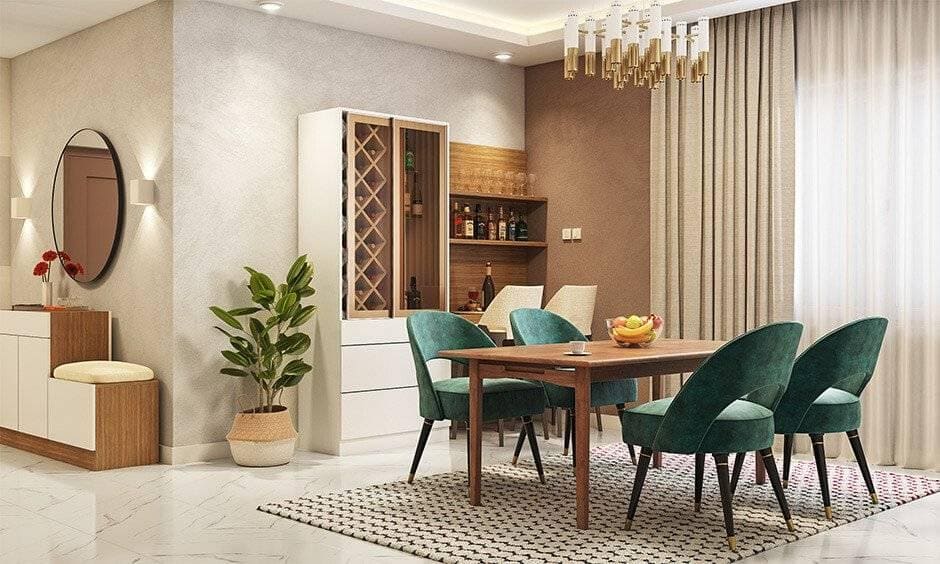Some of the most beneficial tips for decorating your home in a minimalist style involve including a lot of open space, a neutral color palette, and simple floor plans.

“Less is more” became famous through architect Ludwig Mies van der Rohe, known for shaping beauty through simplicity. Many people still think minimalism means empty white rooms with little furniture, but the real idea is different. Minimalist interior design makes space for what truly matters, removes visual noise, and builds a calm environment with balance and intention. It blends clean structure with natural warmth, giving every object a purpose.
With minimalist trends gaining attention, here are some useful tips to create a home that feels peaceful and beautifully designed.
1. Open space
Space shapes how a room feels and how every object interacts with the environment. In minimalist interior design, open areas matter as much as the pieces you choose to place inside them. Space creates visual balance, and that balance begins with a clear focal point that the eye can rest on. When only essential furniture is used, the room gains a natural flow that feels calm and intentional. Negative space allows the furniture to stand out and guide the look of the interior. Clear walls, uncluttered floors, as well as clean surfaces create breathing room. They help a home feel minimal and open. It also gives the space a look of a thoughtful design.
2. Uncomplicated floor plans
Minimalist homes often rely on simple and efficient floor plans that keep the layout clean and practical. Many designs use basic rectangular forms to shape the space, focusing on what is essential and removing anything that feels excessive. The idea is to highlight the people living in the home and the view around them instead of filling rooms with decoration. Every element serves a purpose and adds value to the space. When pieces work together through structure and function, the home feels harmonized and effortless. This is the true spirit of minimalist design!
3. Neutral color palette
White is often linked to minimalism, but you do not need to limit yourself to only that shade. A neutral palette can still protect the minimalist feel and allow the eye to focus on the important elements in a room. If you want to explore brighter colors, choose one or two and keep the intensity soft so the space stays calm and cohesive. Natural wood tones like maple, honey, and walnut can introduce warmth without overwhelming the design. These tones help balance the simplicity and bring comfort into clean modern interiors. A cooler palette also has benefits, especially in smaller rooms, as it reflects natural light more easily and makes the space feel open and larger than it actually is.
4. Importance of lighting
Open spaces with minimal furniture and fewer decorative pieces allow natural light to move freely through the room, and that is one of the strongest advantages of a minimalist interior. Large windows play an important role here because they highlight the view outside and let daylight become part of the design. It creates a calm and uplifting atmosphere for anyone living in the space. Keeping windows uncovered or choosing lightweight curtains can increase the flow of light, and mirrors on wall panels can help reflect brightness throughout the room. Along with that, subtle choices like sconces or simple candlesticks offer gentle artificial lighting that supports a clean and minimal style without adding visual noise.
5. Texture
Simple and smooth textures with light patterns or gentle graphic elements can help your space feel more engaging, and you do not need bold colors to do that. When you experiment with texture, even within a single color palette, you reveal details that might otherwise stay unnoticed. You can play with unconventional shapes or finishes instead of a traditional layout, and that alone can transform a minimalist room. A chandelier, an upholstered headboard, or textured wallpaper can add depth to a neutral space. On the other hand, soft carpets and cozy furniture textures bring warmth without overwhelming the design.
6. Modern furniture
Function and ease of use sit at the core of minimalist interior design, so choose simple and multi-functional modern furniture that feels intentional and stays durable. Make sure that each piece you bring in supports harmony in the room through its lines, shapes, and colors, because this balance is what keeps the space calm and visually clear. You can include one standout furniture piece that makes a quiet statement without breaking the principles of minimal design, creating a defined and polished atmosphere. Simple art that works alongside your furniture adds personality without clutter. If you feel unsure about decisions or layout, you can always work with interior designers who create fully customized home furnishings built around your space and your lifestyle.
7. Clean lines
Straight lines and streamlined shapes found in doors, windows, cabinets, and furniture help strengthen a minimalist interior. You can see a big difference when you start making small swaps. Trading bulky armchairs for a clean, straight-backed sofa or choosing flush kitchen cabinets instead of heavy hardware can immediately sharpen the look. Adding wood pieces or frames with simple edges keeps everything calm and structured. When you aim to condense content and focus on form, you highlight the essentials that reveal the real beauty of the space and the architecture around you.
Minimalist design is all about intention and clarity. When you choose what truly matters and let go of the rest, your home becomes lighter and calmer. It becomes a space you enjoy living in every day.















